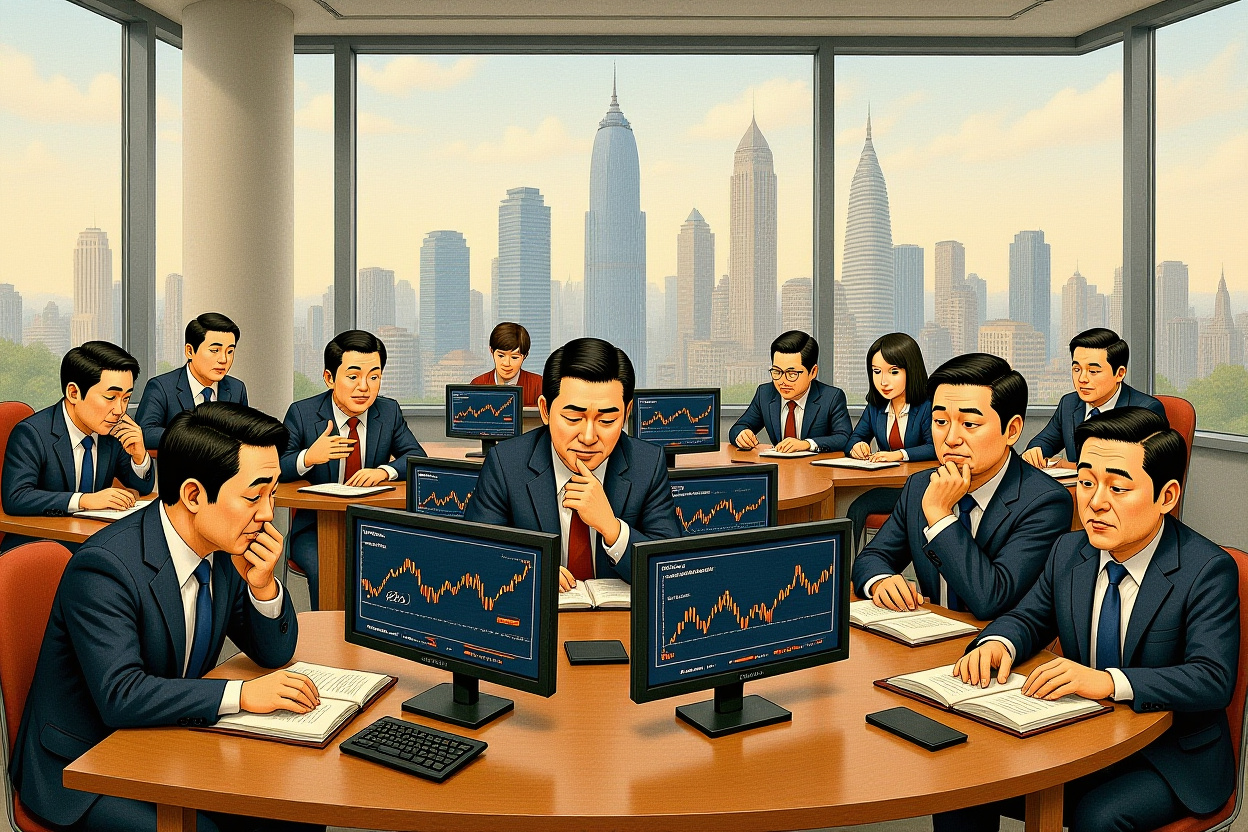Executive Summary
Key developments in China’s securities analyst landscape:
– Securities analyst ranks surpass 6,000 professionals for the first time in history
– 15% year-over-year growth outpaces broader financial sector expansion
– Regulatory reforms and market complexity driving demand for specialized research
– Increased competition creating pressure on research quality and differentiation
– Foreign institutional ownership growth fueling demand for English-language coverage
China’s Research Ecosystem Reaches Critical Mass
The number of registered securities analysts in China has officially surpassed 6,000 professionals, marking a historic milestone for the world’s second-largest capital market. This unprecedented growth reflects both the rapid expansion of China’s financial markets and the increasing sophistication of investment research requirements. The securities analyst workforce has become a critical component of market efficiency, providing the analytical foundation for institutional decision-making across global markets.
This expansion comes amid structural changes in how research is consumed, valued, and regulated within Chinese capital markets. The securities analyst profession has evolved from a niche specialization to a fundamental market infrastructure component, with implications for pricing efficiency, corporate governance, and international investment flows.
Quantifying the Growth Trajectory
The growth metrics reveal a remarkable expansion story. From 2018 to 2023, the securities analyst workforce expanded at a compound annual growth rate of 12.3%, significantly outpacing the overall financial sector employment growth of 6.8%. The current total of 6,000+ professionals represents a 15% increase from the previous year’s 5,200 analysts, demonstrating accelerating demand for research capabilities.
Geographic distribution shows concentration in financial hubs with 42% based in Shanghai, 38% in Beijing, and 12% in Shenzhen. The remaining 8% are distributed across other cities including Guangzhou, Hangzhou, and Chengdu. This concentration reflects the continuing centrality of major financial centers despite technological enablement of remote work.
Drivers Behind the Analyst Expansion
Multiple structural factors have converged to drive this unprecedented growth in China’s securities analyst community. Market complexity, regulatory evolution, and international integration have created ideal conditions for research profession expansion.
Regulatory Reforms and Market Liberalization
The China Securities Regulatory Commission (CSRC 中国证监会) has implemented progressive reforms that have directly increased demand for professional research. The registration-based IPO system, implemented fully in 2023, requires more thorough fundamental analysis of listing candidates. Similarly, the expanded Stock Connect programs and inclusion in global indices have increased foreign participation, creating demand for research that bridges informational and cultural gaps.
New disclosure requirements and corporate governance standards have made analyst coverage essential for market credibility. Companies without adequate analyst coverage now face higher capital costs and reduced investor interest, creating a self-reinforcing cycle of research demand.
Institutional Investment Growth
The rise of domestic institutional investors has been perhaps the most significant driver of securities analyst demand. Assets under management at Chinese mutual funds have grown to $3.5 trillion, while insurance companies and pension funds have significantly increased their equity allocations. These institutions require sophisticated research to support their investment decisions and regulatory compliance requirements.
Foreign institutional ownership of Chinese equities has reached $650 billion, with global asset managers requiring local research capabilities to navigate China’s unique market dynamics. This has created particularly strong demand for bilingual analysts who can translate local insights for global investment committees.
Specialization and Sector Coverage Evolution
The composition of the securities analyst workforce has shifted dramatically toward specialization, reflecting market maturation and the complexity of analyzing China’s evolving economy. Generalists have been largely replaced by sector specialists with deep industry expertise.
Technology and Innovation Focus
New economy sectors now command the largest share of analytical resources. Technology analysts represent 22% of the total workforce, followed by healthcare at 15% and consumer discretionary at 14%. This distribution mirrors the market capitalization shift toward innovation-driven companies and away from traditional industrial and state-owned enterprises.
The depth of coverage has increased dramatically, with major technology companies like Tencent (腾讯) and Alibaba (阿里巴巴) now covered by 45+ analysts each, compared to 15-20 analysts five years ago. This intensifying coverage reflects both the importance of these companies and the competitive dynamics among brokerage research departments.
ESG and Sustainable Investing Integration
Environmental, social, and governance (ESG) specialists have emerged as one of the fastest-growing analyst categories, expanding 200% over the past two years. This growth responds to both regulatory mandates and investor demand for sustainable investment options. The CSRC’s new ESG disclosure requirements for listed companies have made this expertise essential for accurate company valuation.
Green finance and carbon neutrality analysis has become particularly important, with analysts developing specialized models to price carbon risk and energy transition impacts. This specialization represents how global investment themes are rapidly incorporated into China’s research ecosystem.
Competitive Dynamics and Research Quality
The rapid expansion of the securities analyst workforce has intensified competition among research providers while raising questions about research quality and independence. The concentration of talent at top institutions creates both advantages and challenges for market participants.
Brokerage Research Dominance
Top-tier securities firms continue to dominate research production, with the top 10 firms employing 35% of all analysts. CITIC Securities (中信证券) maintains the largest team at 380 analysts, followed by China International Capital Corporation (中金公司) with 340 analysts. This concentration gives major institutions significant influence over market narratives and price discovery.
Independent research providers have grown to represent 15% of the analyst workforce, up from 8% in 2018. This growth reflects demand for conflict-free research and specialized insights not available from integrated brokerage firms. However, independent firms still struggle with compensation disparities and access challenges compared to their institutional counterparts.
Quality Concerns and Differentiation Challenges
The rapid expansion has raised concerns about research quality and analytical rigor. Turnover rates exceed 25% annually as analysts move between firms seeking better compensation, potentially undermining research continuity. Regulatory reviews have identified instances of insufficient due diligence and overreliance on management guidance rather than independent analysis.
Differentiation has become increasingly difficult as research output has become more standardized. The average company now receives coverage from 8.2 analysts, up from 4.5 analysts five years ago. This increased coverage has not necessarily translated into better investment insights, with analyst recommendation accuracy remaining essentially unchanged despite the larger workforce.
Compensation Trends and Talent Development
The competition for analytical talent has driven compensation to levels that rival other financial specialties, fundamentally changing the economics of research production and distribution.
Compensation Inflation and International Alignment
Top analysts at major brokerages now earn total compensation packages exceeding $500,000, with star performers commanding $1 million+ packages. This represents a 150% increase from pre-pandemic levels and begins to approach international compensation standards. The compensation gap between local and foreign firms has narrowed significantly, reducing talent outflow to international institutions.
Compensation structures have shifted toward performance-based incentives, with only 40% of compensation now fixed versus 60% variable. This alignment with research quality and investment performance has improved analytical rigor but also increased pressure on analysts to produce market-moving recommendations.
Talent Development and Educational Requirements
Educational requirements have escalated dramatically, with 85% of new hires holding master’s degrees and 25% possessing PhDs. Financial certifications have become essential, with 92% of analysts holding at least one professional designation such as the Chartered Financial Analyst (CFA) certificate. This professionalization reflects the increasing technical complexity of security analysis in China’s markets.
Universities have responded with specialized programs, with Tsinghua University (清华大学) and Peking University (北京大学) launching dedicated financial analysis tracks within their finance programs. These programs combine theoretical rigor with practical training through internships and industry partnerships.
Future Outlook and Strategic Implications
The expansion of China’s securities analyst workforce has reached an inflection point where quantity growth must transition to quality enhancement. Several trends will shape the next phase of development for this critical market function.
Technology Integration and Automation Impact
Artificial intelligence and machine learning are beginning to transform analytical processes, particularly for data collection, pattern recognition, and initial screening. Major institutions are investing heavily in analytical platforms that enhance rather than replace human analysts. The future analyst will need to combine domain expertise with technology proficiency to remain relevant.
Automation may reduce demand for junior analysts performing routine tasks while increasing demand for senior analysts providing strategic context and qualitative insights. This could change the optimal team structures and career progression paths within research departments.
Global Integration and Standardization
International accounting and reporting standards adoption will continue, reducing the analytical burden of reconciling different reporting frameworks. However, cultural and interpretive differences will remain, requiring analysts who understand both global standards and local business practices.
The internationalization of Chinese companies will create demand for analysts who can evaluate global competitive dynamics and cross-border regulatory impacts. This will favor analysts with international experience and language capabilities beyond English, including other major business languages.
Strategic Recommendations for Market Participants
The expansion of China’s securities analyst workforce creates both opportunities and challenges for different market participants. Strategic responses should account for the changing dynamics of research production and consumption.
Asset managers should develop sophisticated research evaluation frameworks that go beyond traditional broker votes to assess true value creation. Multi-dimensional assessment including prediction accuracy, depth of insight, and original thinking can identify superior research providers amidst the noise of expanding coverage.
Public companies should recognize that analyst coverage quality matters more than quantity. Developing relationships with analysts who deeply understand their business model and industry dynamics can improve market communication and valuation accuracy. Companies should prioritize accessibility and transparency with analysts who demonstrate serious research commitment.
Individual analysts should focus on developing specialized expertise that cannot be easily automated or standardized. The combination of deep sector knowledge, analytical technology proficiency, and communication skills will define career success in an increasingly crowded field. Continuous learning and adaptation will be essential as market structures and analytical tools evolve.
The securities analyst profession in China has reached maturity in scale but continues to evolve in substance and impact. Market participants who understand this evolution and adapt accordingly will gain significant advantages in navigating China’s complex capital markets.




